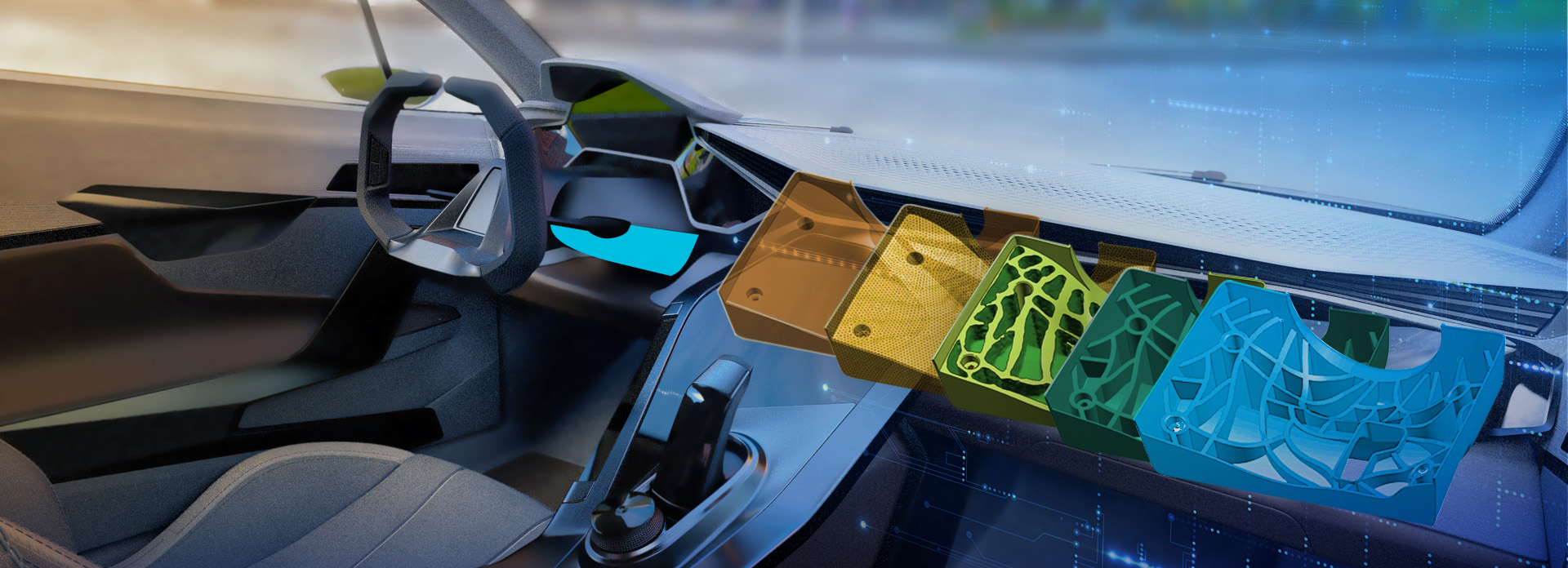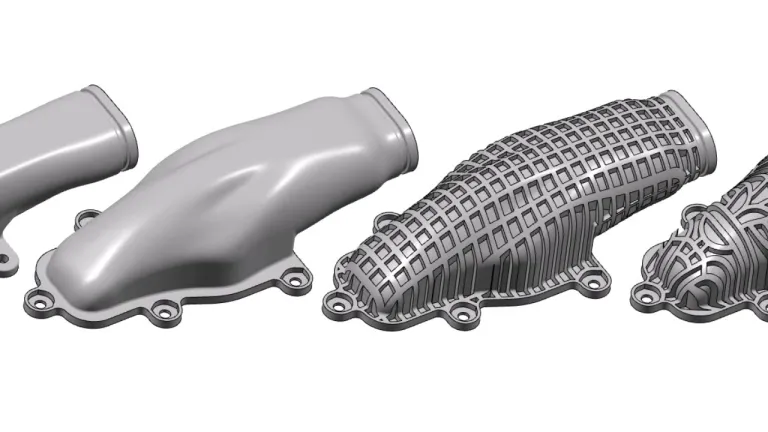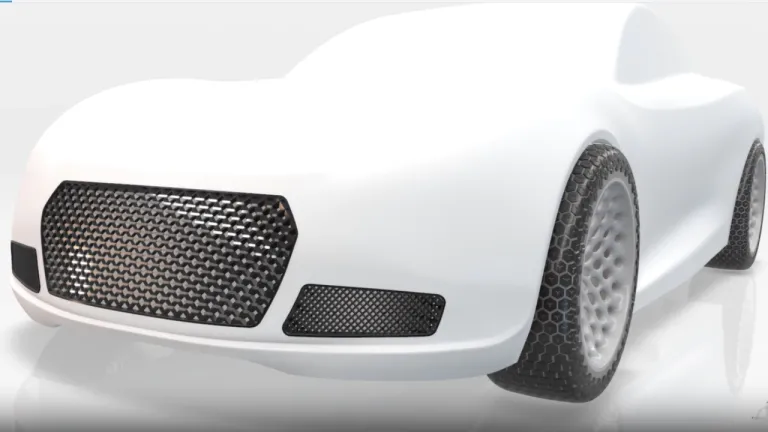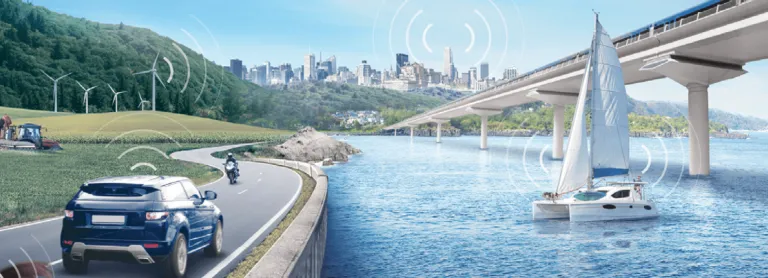AI-Driven Generative Experiences
Succeed with AI in Knowledge-Based Engineering
Enhance Your Capabilities with Generative AI
Generative Artificial Intelligence (AI) has emerged as a groundbreaking tool for designers and engineers, offering unprecedented capabilities to create new design concepts, optimize product performance and innovate to solve complex technical challenges. CATIA propose a different approach of Generative AI, with machine and deep learning in various applications to solve product development time and time to market, based on models developed from industry-specific data, generated from knowledge and know-how of industry processes. Your productivity, cost and time constraints can today be solved with AI in CATIA:
- Enhanced Performance to generate higher-performance designs
- Reduction of the time to market up to 300%
- Management of a larger scope of requirements while controlling investment cost
- Reduction of warranty costs by 10%
- Growing reuse by standardization & modularization up to 80%
Generate Automatically High Performance Designs Satisfying Engineering Requirements
Generative AI can now be achieved with Performance Driven Generative Design solutions from CATIA, by:
- The creation of topology optimized parts and assemblies for innovative, high-performance structures and assemblies. This is used by many of our customers in a wide range of engineering disciplines and sectors (aerospace, automotive, Industrial Equipment)
- A dedicated solution to fast generation of Body & Chassis structure to explore thousands of alternatives early in the concept stage, as for new Electric Vehicle platform (chassis-body) architectures
- Multi-Materials Concept studies to optimize the layout and topology of structural components, to maximize stiffness, strength and weight efficiency while satisfying design constraints, like Aircraft wings in composites
Design By Algorithm with CATIA Visual Scripting
With the democratization of Generative AI, designers and engineers are looking for new ways to explore more design possibilities. With CATIA Visual Scripting, you can now easily elaborate complex and intelligent designs thanks to an intuitive no-code, algorithmic approach, while being faster, efficient and flexible in your creation process. Visual Scripting aims to push the boundaries of your designs and address all design and engineering challenges, by:
- Exploring more design alternatives and styling patterns
- Modeling cutting-edge products and intricate textures
- Maximizing team efficiency and collaboration
Managing the Growing Complexity of Sustainability Regulations and Software-Defined Products
Designing and launching a product is always a complex task for designers and engineers due to many constraints (quality, desirability, cost...). In many industries, this complexity is rising because of:
- The sustainability imperative: companies need to consider climate change constraints and sustainability regulations into their products, by calculating the environmental impact over the product lifetime and balancing it with the other decision criteria
- The rise of software defined products: designers and engineers have to manage complex interactions between hardware and software disciplines with different life cycles
Start Your Journey
The world of AI-driven Design in Knowledge-based Engineering is changing. Discover how to stay a step ahead with CATIA
FAQ About AI-Driven Generative Experiences
Also Discover
Learn What CATIA Can Do for You
Speak with a CATIA expert to learn how our solutions enable seamless collaboration and sustainable innovation at organizations of every size.
Get Started
Courses and classes are available for students, academia, professionals and companies. Find the right CATIA training for you.
Get Help
Find information on software & hardware certification, software downloads, user documentation, support contact and services offering




